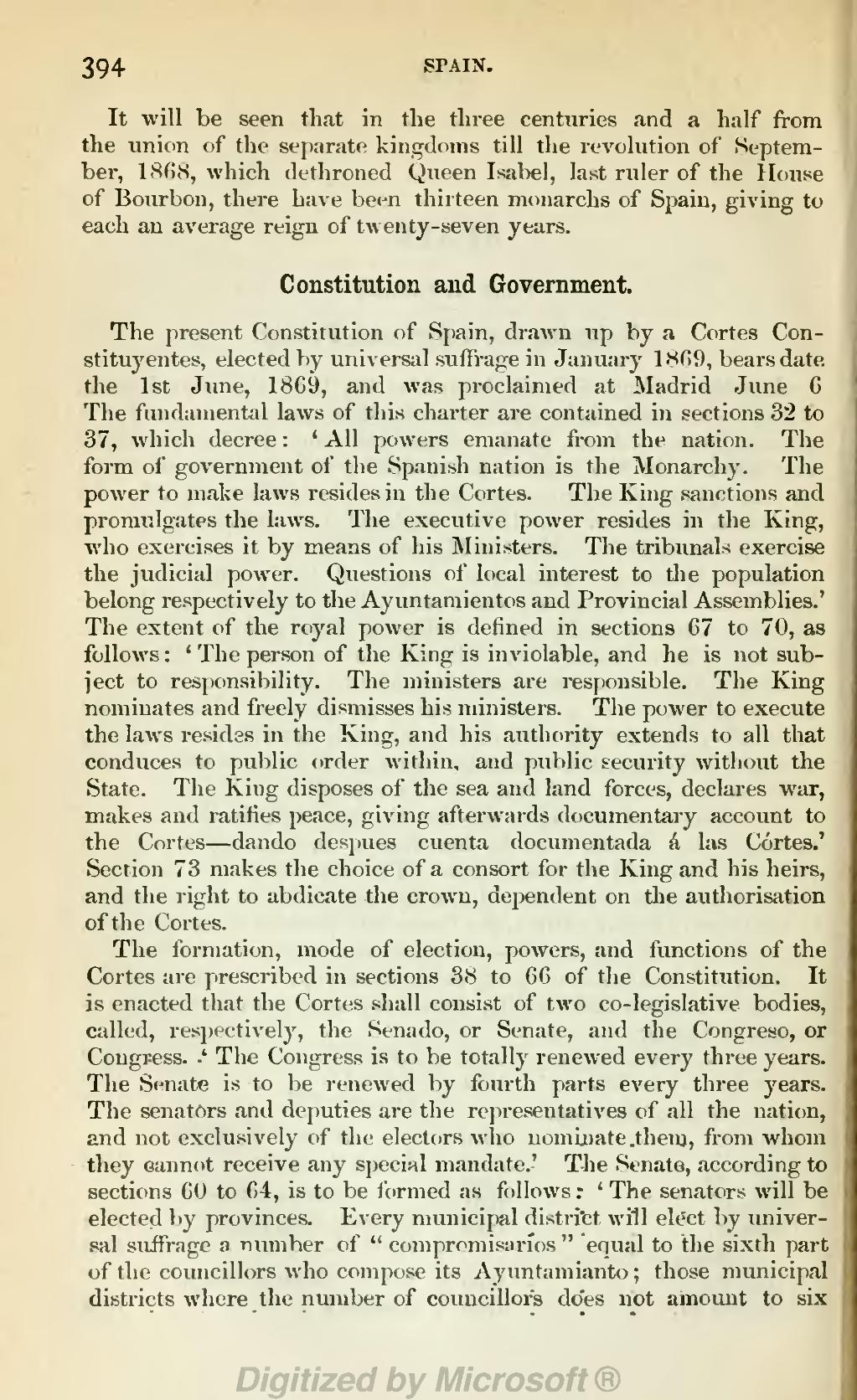394 spain.
It will be seen that in the three centuries and a half from the union of the separate kingdoms till the revolution of Septem- ber, 1868, which dethroned Queen Isabel, last ruler of the House of Bourbon, there have been thirteen monarchs of Spain, giving to each an average reign of twenty-seven years.
Constitution and Government.
The present Constitution of Spain, drawn up by a Cortes Con- stituyentes, elected by universal suffrage in January 1809, bears date, the 1st June, 1869, and was proclaimed at Madrid June 6 The fundamental laws of this charter are contained in sections 32 to 37, which decree : ' All powers emanate from the nation. The form of government of the Spanish nation is the Monarchy. The power to make laws resides in the Cortes. The King sanctions and promulgates the laws. The executive power resides in the King, who exercises it by means of his Ministers. The tribunals exercise the judicial power. Questions of local interest to the population belong respectively to the Ayuntamientos and Provincial Assemblies.' The extent of the royal power is defined in sections 67 to 70, as follows : ' The person of the King is inviolable, and he is not sub- ject to responsibility. The ministers are responsible. The King nominates and freely dismisses his ministers. The power to execute the laws resides in the King, and his authority extends to all that conduces to public order within, and public security without the State. The King disposes of the sea and land forces, declares war, makes and ratifies peace, giving afterwards documentary account to the Cortes — dando despues cuenta documentada a las Cortes.' Section 73 makes the choice of a consort for the King and his heirs, and the right to abdicate the crown, dependent on the authorisation of the Cortes.
The formation, mode of election, powers, and functions of the Cortes are prescribed in sections 38 to 66 of the Constitution. It is enacted that the Cortes shall consist of two co-legislative bodies, called, respectively, the Senado, or Senate, and the Congreso, or Congr-ess. .' The Congress is to be totally renewed every three years. The Senate is to be renewed by fourth parts every three years. The senators and deputies are the representatives of all the nation, and not exclusively of the electors who nominate .them, from whom they oannot receive any special mandate.' The Senate, according to sections 60 to 64, is to be formed as follows : ' The senators will be elected by provinces. Every municipal district will ele"ct by univer- sal suffrage a number of " compromisarios " equal to the sixth part of the councillors who compose its Ayuntamianto; those municipal districts where the number of councillors does not amount to six
